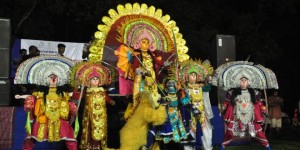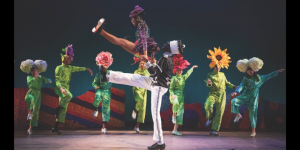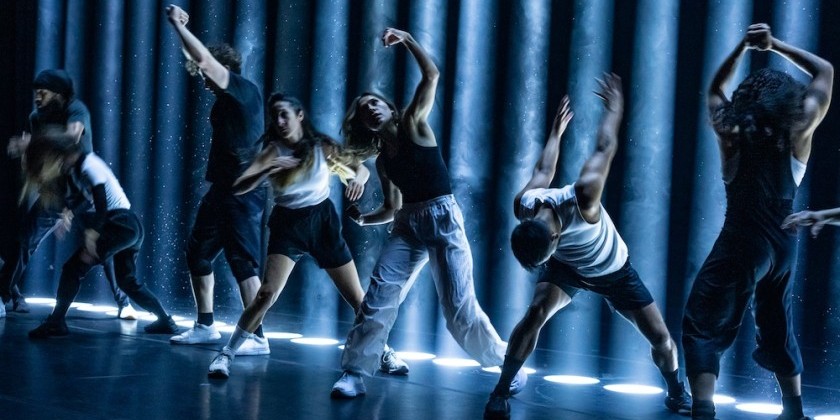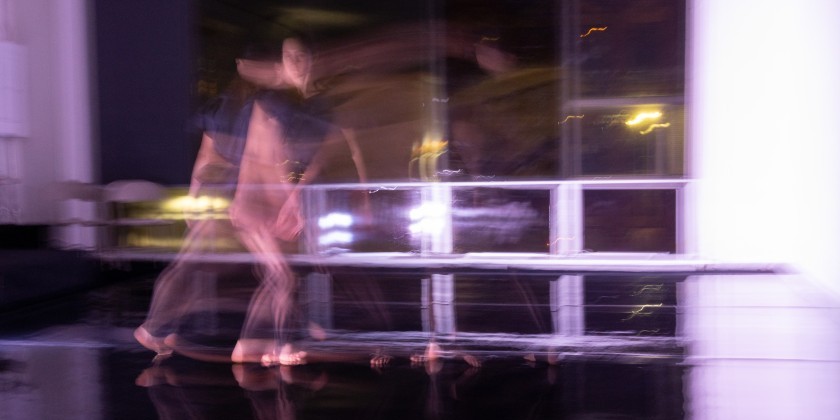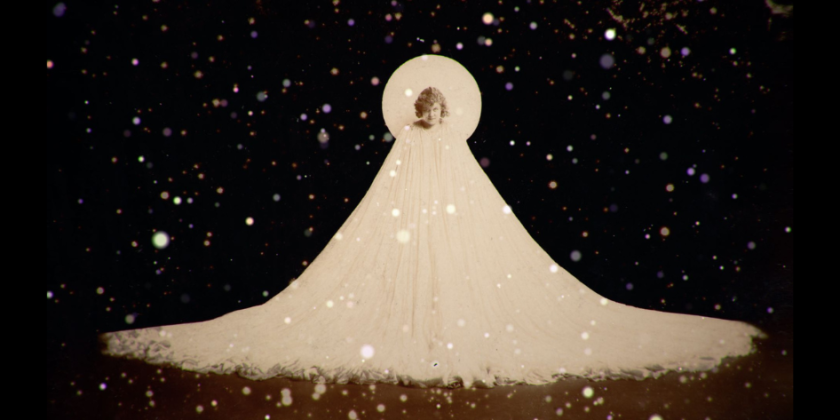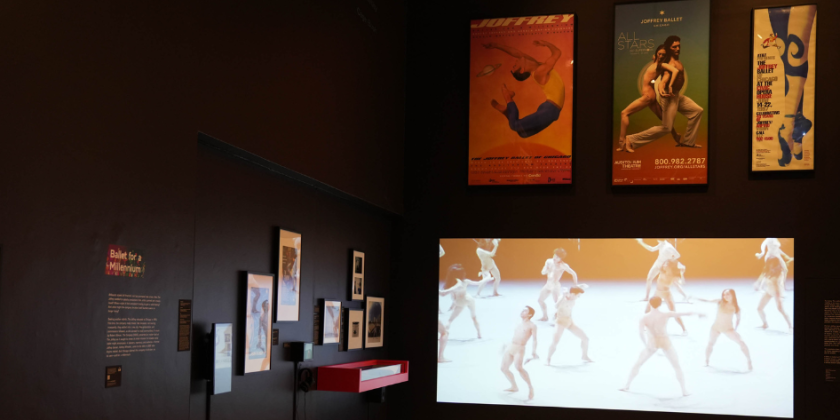IMPRESSIONS: Falling In Love with Bharat (India) During New York's Fall Dance Season - Part 2
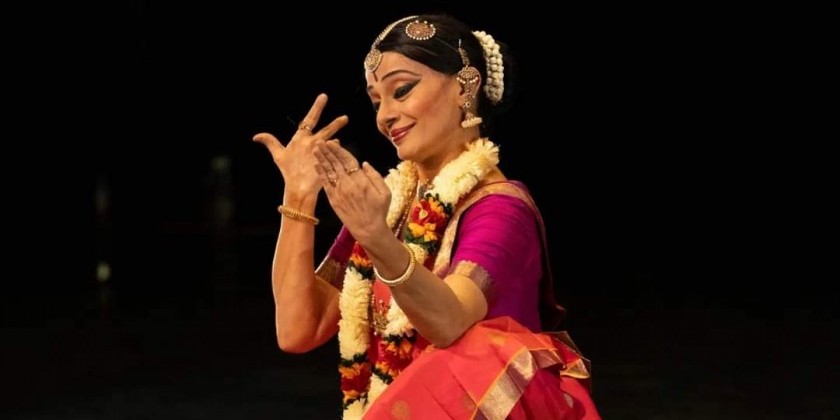
The Erasing Borders Dance Festival Presents Malavika Sarukkai and Artists + Bala Devi Chandrashekar Presents "Padmavati: An Avatar"
Erasing Borders Dance Festival Presented by the Indo-American Arts Council
Committee and Curators: Deepsikha Chatterjee, Uttara Asha Coorlawala, Sruthi Mohan, Dipashreya Sur, Jin Won, Preya Patel, and Srinidhi Raghavan
Featuring Malavika Sarukkai and more | Bala Devi Chandrashekar in Padmavati: an Avatar
Music by Rajkumar Bharathi | Lyrics by Dr. S. Umapathi Siromani
Just as Bijayini Satpathy’s engagement at the Baryshnikov Arts Center was ending, another Indian dance festival began. This was the annual Erasing Borders Dance Festival sponsored by the Indo-American Arts Council, and held this year, September 23-25, at the Ailey Citigroup Theater, with ancillary events at Barnard College and the New York Public Library for the Performing Arts, not to mention a bonus, virtual program. The first two nights offered a treasure trove of performances, including more Diaspora artists. We had an intriguing glimpse of Chicago’s Natya Dance Theatre in Search Within, a duet performed by Amuktha Samudrala and Prarthana Prashant, neatly choreographed by Hema Rajagopalan; and Sonali and Nidhika Loomba, Kathak dancers originally from Bangalore (but now Salt Lake City), whose dreamy Anhad--Limitless Love captured the sweetness and serenity of Rumi’s poetry. In her solo Virodhābhāsa: Investigating the Nature of Paradox, Bharatanatyam dancer Navia Natarajan, led us on a journey through grief and recovery.

A trio, Vazhi — On Different Paths, drew a complicated story from the Ramayana, depicting the intertwined fates of the siblings of Ravana, the demon king. Most movingly, Surya Ravi mimed the disappointments of the demoness Shoorpanaka, who is first widowed and then mutilated in her quest for love, receiving something less than total support from her family. Vivek Ramanan and Aarthy Sundar were the other members of this talented group, both Diaspora artists who began their Bharatanatyam training in Texas.

While classic stories and classic styles dominated these programs, Erasing Borders’ six curators like to tease. Thus, Sunday’s event also featured Manish Chauhan, an Indian b-boy cum modern dancer, in Igal Perry’s Meditations on an Open Road. Chauhan gamely tumbled, and struck poses on a folding chair; and while the influence of Indian dance here is subtle Perry seems to have adapted some twisting patterns from Kathak. An even more bumptious number was Shringarik Lavani, a booty-shaking folk ensemble choreographed and starring Shivani Badgi. When not prancing and shimmying to the rhythm of the dholak, these artists recounted tales of love; and the piece concluded with a wedding tableau amid cascades of flowers. What fun!
Although these Lavani dancers were provocative, true audacity waited to appear in the form of Project Convergence, a company that places tap dancers and Bharatanatyam dancers side-by-side, performing to the same rhythms. Codirector and tap choreographer Vikas Arun explained, during a panel discussion at Barnard, that his goal in this untitled work-in-progress is to follow the condensed format of a traditional Bharatanatyam program, called a margam, eventually producing an evening-length work. The piece, he said, currently begins with the classic warm-up, the alarippu, replaces the central varnam, and follows with two rapid-fire tillanas, concluding the whole not with pious reverence but with splashy, Bollywood excess. Where this is going, no one can say (there have been attempts to produce a Bollywood-style dancical, but the smash success of Riverdance remains an elusive dream). Project Convergence, at least, is breaking new ground. Ramita Ravi led the Bharatanatyam contingent with astonishing speed; and Apoorva Natarajan co-directs.

Despite all this excitement, the most eagerly anticipated performances at the Erasing Borders festival were still those of Padma Sri Malavika Sarukkai, the glamorous and much decorated artist who appeared on the mixed bill on Saturday night, and again as speaker and soloist in a lecture-performance at the NYPL’s Bruno Walter Auditorium, on Monday. Her fans were not disappointed, as each of these events revealed different facets of Sarukkai’s talent and personality.
Saturday’s program had Time as its theme, measured both in minute increments by the trembling of ankle bells and in languorous stretches by the passing seasons. Even longer cycles may be implied, such as those experienced by transmigrating souls and the revolutions of the yugas, as these dances belong to a culture with a vast and ancient cosmology. In her first piece, Stillness/Movement, Sarukkai counterposed bursts of furious percussion with moments of calm introspection, revealing her exceptional musicality and an ability to live within the rhythm, which seemed to flow around her in a stream.
Two additional items were expressive in character, and dedicated to Krishna, who appeared both as the dark god of the monsoon, and as the Divine Lover — a source of fertility and rejuvenation. As the first nayika whom Krishna encounters, Sarukkai’s hands play overhead imitating wandering storm clouds. She kneels and begins shaping sand castles, and then impulsively catches herself in an embrace as dreams of love prepare her for the arrival of the god. When Krishna appears on cue, the nayika displays kittenish charm, feigning resistance but barely able to conceal her desire. It begins to rain. First, Sarukkai feels a stray drop on her shoulder, but then it pours and in the midst of the torrent she grasps Krishna by both hands and circles in ecstasy. She skips; she splashes in invisible puddles; and as the music races she hops from side to side delicately drumming the floor. Her hands tremble suggesting a divine radiance, and she sinks to one knee overcome with rapture.

In the second episode, the music of Krishna’s flute precedes him, mesmerizing every woman within earshot. Representing this multitude of women, Sarukkai falls into a romantic reverie, then drops what she is doing and hastens to the rendezvous with uncertain but urgent steps. Krishna appears (Sarukkai, again), holding his flute to his lips in the center of a mystic circle of blue light, eerie and powerful. Soon the god is dancing, darting and leaping as he holds fast to a gopikawith each hand. Then Sarukkai’s eyes widen with amazement, as she witnesses a miracle. Krishna is multiplying himself (she counts the number on her fingers), so he can give himself entirely to each of his devotees.
Throughout both these pieces, despite her exertions and sensual charms, Sarukkai performs with an almost ghostly delicacy leading one to believe that someday this artistic veteran, who made her New York debut in 1985, may simply fade into the ether. Two days later, however, she appeared at the NYPL, reassuringly solid and ready to explain herself in words. The occasion was the memorial lecture established in honor of the late dance critic and scholar Dr. Sunil Kothari, a beloved figure whose tireless pursuit of the Muse, and whose efforts on behalf of Indian dance, became legendary. Dr. Uttara Asha Coorlawala introduced the event with a moving and sometimes humorous account of Dr. Kothari’s career.

In her lecture, Sarukkai revealed herself to be, most profoundly, a traditionalist describing Bharatanatyam, that millenary art form, as a language that can speak in the present tense. Like T.S. Eliot in his essays, Sarukkai believes in the living presence of the past. She also believes that her art has a cosmic dimension, so she seeks to find the infinite within the moment. She believes in an energy that rises into her body from the earth, and also emerges from the alphabet of the dance. That alphabet is very particular---not any way, but just so---yet while being as scrupulous as a geometer about shapes and positions, each dancer must also find her own, personal “alignment,” a tuning physical, emotional, and spiritual that resembles the tuning of a musical instrument. This personal alignment cannot be taught; the dancer must seek for it; and success results in a divine harmony. Speaking of Bharatanatyam’s expressive aspect, Sarukkai explains that the dancer must help the audience see what she sees, projecting her vision with intention and sculpting space with her energy.
Sarukkai illustrated these remarks with three dances, including a remarkable depiction of an old woman shrunken with grief, her face lined with misery as she watches her beloved son reduced to ashes on a funeral pyre in the holy city of Varanasi. Here Sarukkai’s transformation was shocking. In another dance, Sarukkai represented Krishna as a giant astride the world, holding a mountain in his hand and sheltering a village from the anger of the sky god, Indra. While all these solos were tours de force, the one that best revealed this artist’s special gift was an evocation of the confluence of two rivers, Alaknanda and Bhagirathi, which come together at Devprayag to form the sacred Ganges. For Malavika Sarukkai, above all else, is a lyric dancer, with a freedom of movement that seems to know no resistance and makes transitions instantaneous. Gliding and streaming, she is most herself when changed into water.

The month was almost ended, but on the very last day (September 30), yet another Indian artist gave a solo recital at Symphony Space. This was the popular dance teacher Bala Devi Chandrashekar, based in Princeton, NJ, whose evening titled Padmavati: An Avatar, paid tribute to the 12th-century temple dancer, who, as wife of the poet Jayadeva, was the first to dance to the sacred verses of the Gita Govinda. A mature performer, Chandrashekar emphasized the expressive possibilities of Bharatanatyam in a series of short skits. Among the most charming of these was a piece about a humble flower seller whom Krishna blesses for her devotion. Here Chandrashekar rapidly changed character, altering her whole body (angikabhinaya) to portray the bashful maiden joyfully weaving intricate garlands with her hands; the stern officer who angrily accuses her of theft and throws her to the ground; and Krishna himself, at once mischievous and serene, who wastes no time in rescuing his devotee. As if summarizing the last month and more of activities, Chandrashekar concluded by remarking that “the entire world is Vrindavan,” meaning the abode of Krishna. As the Indian community burgeons, all lovers of beauty are invited to join in the dance.





